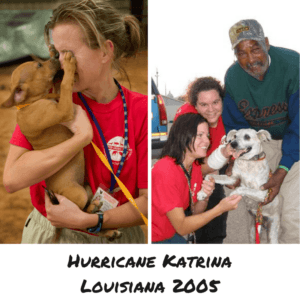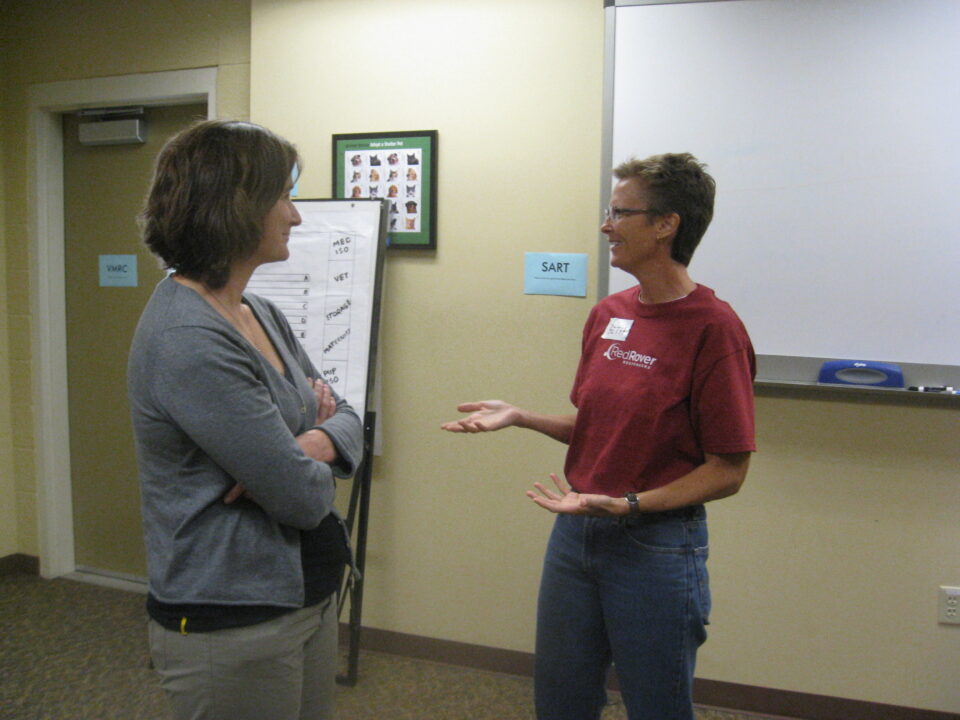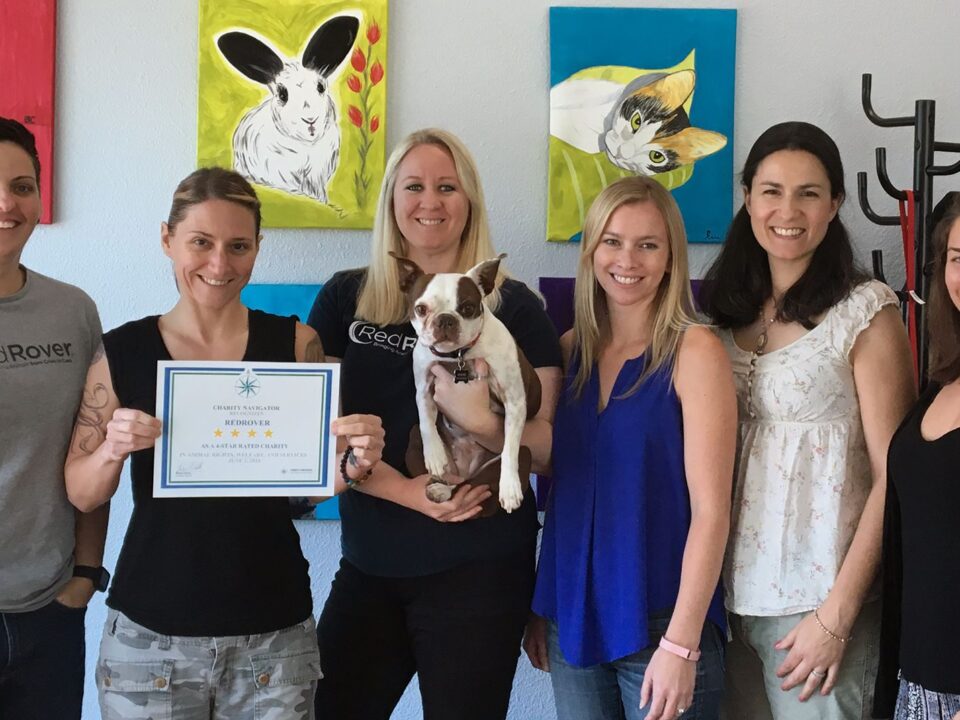RedRover Responders looks back on 30 years
November 27th, 2017
By Susie Robert, RedRover Director of Programs
Looking back over the last three decades, it’s interesting to see how much animal disaster response has changed. Today, there are multiple national animal welfare organizations with disaster response teams, as well as state and community animal response teams, plus other local agencies who have animal disaster plans in place. This is not what the landscape looked like 30 years ago. At that time the plight of animals in disasters was not recognized as an essential part of any disaster planning. Animals were often abandoned – left behind because there was no plan to accommodate them at evacuation shelters.
 RedRover (then United Animal Nations), saw the need to help animals in disasters, and over the past 30 years has been a constant champion for animals in crisis, effectively helping in more than 80 natural disasters. Hurricane Katrina, in 2005, brought the plight of animals in disasters to national awareness. When Katrina struck, there was no plan for the animals, and many people refused to evacuate without them, thereby putting their own lives at risk. Approximately 250,000 dogs and cats were displaced or died as a result of Hurricane Katrina.
RedRover (then United Animal Nations), saw the need to help animals in disasters, and over the past 30 years has been a constant champion for animals in crisis, effectively helping in more than 80 natural disasters. Hurricane Katrina, in 2005, brought the plight of animals in disasters to national awareness. When Katrina struck, there was no plan for the animals, and many people refused to evacuate without them, thereby putting their own lives at risk. Approximately 250,000 dogs and cats were displaced or died as a result of Hurricane Katrina.
At the time, RedRover participated in nightly calls with other agencies to try to coordinate the animal response effort. These calls evolved into the agency called the National Animal Rescue Sheltering Coalition (NARSC), a collaborative group of organizations that includes government agencies, dedicated to working together to help animals in need. Today, not only is animal disaster planning recognized, it is expected. Although much work still needs to be done, animals are now included in disaster planning, and RedRover has been an integral part of this evolution.
Today, RedRover Responders is very different from the original program. Starting out in a consultancy role, the program adopted the current volunteer-based model in the 1990s, holding the very first volunteer training workshop in 1995. Since then, more than 9,000 volunteers have been trained, helping thousands of animals during more than 180 emergencies. Originally, the program was designed to help animal victims of disasters, but has since expanded to also help animal victims of cruelty and neglect. Indeed, in more recent years we have helped more animals rescued from cruelty cases than from natural disasters. There has been much change in the program, but one thing has remained constant: We remain ready and committed to help animals in crisis.
You can help us continue to be there for animals in crisis. Please donate on Giving Tuesday: redrover.org/givingtuesday2017



